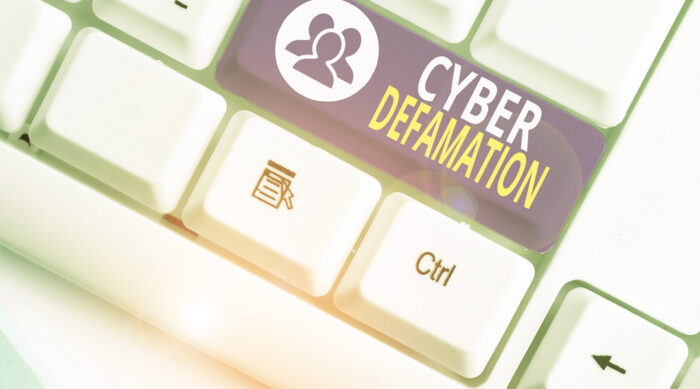What To Do If I’m Being Defamed Online
July 20, 2023 • 4 min read
It can be an incredibly stressful situation to face targeted online harassment, whether it’s on social media, review sites, or any other corner of the internet. As our society becomes more reliant on the internet on a daily basis, the real world effects of this harassment can be immediately felt. Whether you’re being attacked in a personal or professional setting, there are certain steps you can take to best handle these types of situations. Learn more about social media defamation, steps to take, and more with the experienced professionals at Buckingham.
1. Stay Calm and Assess the Situation
The first and most important step of managing defamation is one of the hardest. You have to stay calm and assess the situation when you’re being attacked online. While a rapid response may be the best solution in certain situations, an emotional reaction to online harassment is rarely a good idea. Instead, it is best to evaluate your options before responding. Taking time to figure out the best response can help lessen the damage from this type of online harassment.
2. Gather Evidence Online
It’s important to understand and preserve all evidence related to online harassment and defamation. Often, harassment is not happening on just one platform. For example, if someone is posting false statements about you on one social media platform, it’s important to check other platforms where your harasser operates. Additionally, if you see a fake or defamatory review pop up on one review platform, check all other platforms where your business has a profile. This will help determine the full scope of your problem.
Once you know the scope of the problem, it is important to preserve the defamation or harassment. This can include taking screenshots of the posts or reviews, copying the URLs, and making copies of any videos that are included in the posts. Preserving the harassment or defamation will be crucial if you decide to take legal action against your harasser.
3. Identify Who Is Responsible
Identifying, if possible, who is responsible for defaming you is an important step in figuring out how to address the harassment. If you are able to figure out who is actually responsible for the harassment, there are a number of steps you can take to try to resolve the issue. If the person is using a fake name, or pseudonym, your options for addressing the harassment are more limited.
4. Attempt to Resolve the Issue Amicably
If you’re able to identify your harasser, it may be possible to resolve the issue amicably. In order to achieve a quick resolution, it’s important to not go over the top in your initial outreach, but instead try to diffuse the situation. Threats of legal action, massive penalties, and huge monetary demands can short circuit a potential resolution before negotiations even begin. Measured demand letters, that attempt to resolve the dispute, can oftentimes be more effective in diffusing the situation quickly. Opening a line of dialogue with your harasser can save you a lot of time and expense in the long run. In some cases, a simple request may be enough to resolve the issue and prevent further harm.
5. Report the Defamatory Content
Another avenue to take for immediate relief is to report the defamatory or harassing posts to the platform which they are posted on. All platforms on the internet have various terms of service, which If the individual refuses to cooperate or if the defamation persists, report the content to the relevant platforms and online service providers. Most social media platforms and websites have mechanisms in place to handle reports of defamation and other harmful content.
6. Pursue Legal Action
If all of these attempts fail, you may need to take legal action to address the defamation and take legal action to protect your reputation and seek compensation for damages caused by the defamation. Deciding whether to take legal action can be a difficult decision with many factors. You need to consider what causes of action you have, who you need to pursue, and where to file.
Online defamation and harassment can take many forms, and give rise to a few different causes of action beyond defamation, including invasions of privacy, infliction of emotional distress, and other related torts. In addition, depending on who is conducting this harassment, there could be a host of contractual claims at play too.
Figuring out who to sue is also important. Before you can pursue legal action, you need to know who is responsible for the harassment. If you can’t figure out who exactly is responsible for the defamation, you might be able to file a John Doe lawsuit to unmask the individual responsible.
The last step is figuring out where to file. The general principle is that it is better to sue an individual in the jurisdiction they reside in. If you are filing a John Doe suit, that is best done in the jurisdiction you reside in. Where to file can be a complicated analysis that should be done with your attorney.

Remember These Steps When Facing Online Defamation
While it may be impossible at the moment, following these steps can help lessen the impacts of online defamation and harassment. Once you have followed these steps, and if you are unable to resolve the situation on your own, remember to seek professional legal advice and support to ensure the most effective course of action for your specific situation.
Visit our Defamation practice page and request a free consultation by emailing [email protected] today.